Contents


Vitamin C is a water-soluble vitamin found in many foods. Sometimes it is added to food as an artificial additive, and sometimes it is purposefully taken as a drug. Some animals can produce it on their own, but a person is deprived of such an ability. Therefore, it must necessarily enter the body from the outside. Only one of the isomers is biologically active – L-ascorbic acid, it is called vitamin C.
Vitamin C is involved in the process of collagen production, it is present in connective tissue, tendons, ligaments, cartilage, gums, skin, teeth and bones, and is part of blood cells. Without it, normal cholesterol metabolism is impossible. Vitamin C is a powerful antioxidant that provides a good mood and a strong immune system. It energizes a person and gives him strength.
It is difficult to find an explanation for the widespread myth that lemon is the champion in vitamin C content. It has long been proven that there are many other vegetables and fruits that are many times ahead of it in this race. Moreover, access to them is unlimited and they grow everywhere in our country.
However, the glory of lemons is difficult to block, many still consider them the main source of vitamin C. Most likely, this myth is rooted in our childhood, when in winter only lemons and tangerines brought from the south could be obtained from fresh fruit stores. They were not just symbols of the New Year holidays, but the only available vitamin supplement for the Soviet people. In addition, for the first time, ascorbic acid was obtained precisely from lemon juice, but few people know that its amount in 100 g of citrus is only 40 mg, and in tangerines it is even less – 38 mg.
What fruits and vegetables have the most vitamin C?
What fruit has the most vitamin C? The world record holder among fruits are cockatoo plums, native to the forests of Australia.
 5600 mg
5600 mg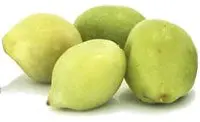 5320 mg
5320 mg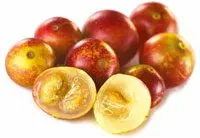 3133 mg
3133 mg 1800 mg
1800 mg 1 677 mg
1 677 mg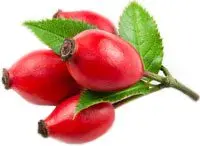 Dry: 1200 mg Fresh: 426 mg
Dry: 1200 mg Fresh: 426 mg 333 mg
333 mg 228 mg
228 mg 200 mg
200 mg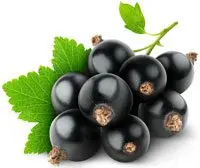 181 mg
181 mg 133 mg
133 mg 128 mg
128 mg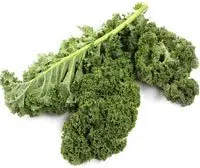 120 mg
120 mg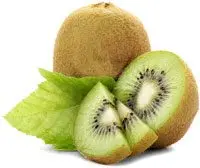 93 mg
93 mg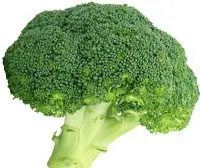 89 mg
89 mg+ 20 more foods rich in vitamin C | |||||||
Brussels sprouts | 85,0 | kohlrabi | 62,0 | Lemon | 53,0 | grapefruit | 31,2 |
Dill | 85,0 | Witch’s broom | 61,0 | Cauliflower | 48,2 | Tangerines | 26,7 |
Longan | 84,0 | Papaya | 60,9 | Pineapple | 47,8 | Raspberry | 26,2 |
lichee | 71,5 | Strawberries | 59,0 | White cabbage | 36,6 | Tomatoes | 13,7 |
Persimmon | 66,0 | Orange | 53,0 | Mango | 36,4 | Apricot | 10,0 |
View the entire table 300+ ➤
How much vitamin C can be taken per day for children, adults and pregnant women?
The European Scientific Committee on Nutrition in 2013 compiled the norms of daily intake of vitamin C for different categories of citizens. The minimum rate for men is 90 mg, and for women – 80 mg. Ideal values are 110 mg for men and 95 mg for women. Such an amount of ascorbic acid will make it possible to cover daily losses, as well as to maintain its plasma level within 50 μmol / l.
Smokers have a daily requirement for vitamin C higher by 35 mg/day. This is due to the fact that they receive more toxins from tobacco smoke, which means that the body spends more antioxidants to neutralize them. Therefore, plasma levels of vitamin C are always lower in smokers than in non-smokers.
Daily intakes of vitamin C for different age groups are presented in the table below:
Age | Men (mg per day) | Women (mg per day) |
0-3 months | 30 | 30 |
4-6 months | 35 | 35 |
7-12 months | 40 | 40 |
1-3 years | 45 | 45 |
3-7 years | 50 | 50 |
7-11 years | 60 | 60 |
11-14 years | 70 | 60 |
14-18 years | 90 | 70 |
19 years and older | 90 | 90 |
Pregnancy | 100 | |
Lactation | 120 | |
smokers | 125 | 110 |
Norms of physiological requirements for vitamins in the Russian Federation (RF, MR 2.3.1.2432-08)
Who needs more vitamin C?
If the body receives less than the recommended dose of vitamin C, then a person develops a deficiency of this substance. The following people are most at risk of developing beriberi:
Smokers. Not only active tobacco users suffer, but also those who are nearby and regularly inhale smoke.
Breastfed children receiving pasteurized or boiled milk.
People who adhere to a dietary diet with a limited intake of vegetables and fruits.
Patients suffering from malabsorption, cachexia, certain types of cancerous tumors, renal failure (being on hemodialysis).
People living in areas with unfavorable environmental conditions.
Persons at the stage of recovery from their wounds.
Women receiving oral contraceptives.
A person needs more vitamin C if they are regularly stressed or lack sleep. The need increases against the background of viral infections, with anemia and diseases of the cardiovascular system.
Maximum daily dose of vitamin C
The upper acceptable level of vitamin C intake in Russia is 2000 mg/day. Ascorbic acid dissolves in water, so even if more than 10 g enters the body (this amount is contained in 200 yellow pills), the kidneys will easily remove it.
So is there a risk of vitamin C overdose? Doctors say that the symptoms of acute poisoning will appear if a person consumes 20-30 g of ascorbic acid per day.
However, if over a long period of time high doses of vitamin C enter the body, this will lead to malabsorption of vitamin B12, to an increase in the level of uric acid in the urine and the formation of oxalate stones in the kidneys. Excess ascorbic acid is dangerous for women taking estrogen-containing hormones.
High doses of vitamin C lead to an increase in the levels of enzymes that are involved in its metabolism. This is especially dangerous for pregnant women, as it threatens to develop rebound scurvy in newborns.
[Video] What if you overdose on vitamin C?









